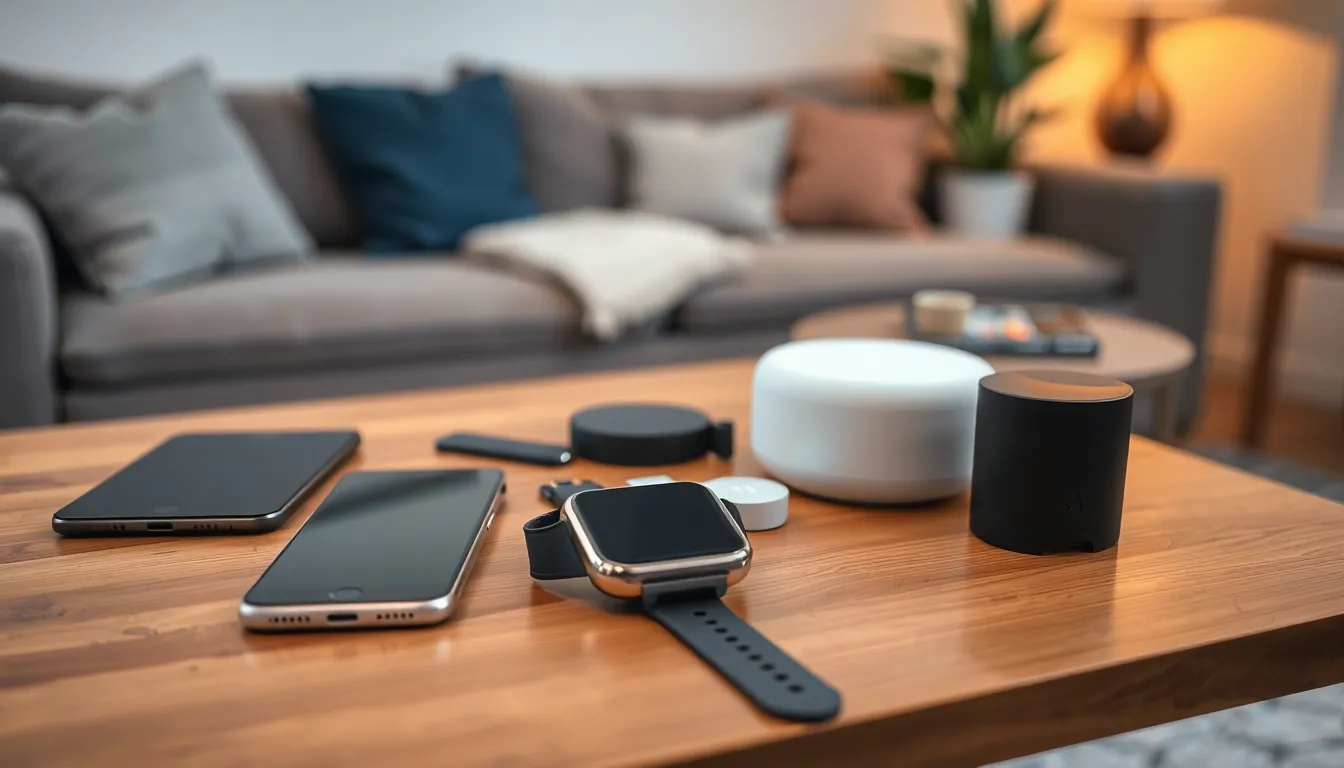In a world where gadgets pop up faster than a cat meme, staying ahead of the tech curve can feel like a full-time job. Whether it’s the latest smartphone promising to change lives or a quirky kitchen gadget that claims to make cooking a breeze, the options can be overwhelming. But fear not! Gadget analysis is here to cut through the noise and help you navigate this digital jungle.
Imagine having a trusty sidekick who not only knows the ins and outs of every device but also has a sense of humor about it. From dissecting features to revealing hidden gems, this analysis will ensure you invest wisely in the gadgets that truly deserve a spot in your life. Buckle up and get ready to discover which devices are worth your hard-earned cash and which ones might just end up gathering dust.
Table of Contents
ToggleOverview of Gadget Analysis
Gadget analysis serves as a vital tool for navigating the fast-paced technological landscape. It offers insights that help consumers identify the best products suited to their needs.
Importance of Gadget Analysis
Gadget analysis holds significant value in today’s tech-driven world. It simplifies decision-making by presenting objective evaluations of devices. Buyers benefit from clearer comparisons between features, prices, and reliability. Analysts provide unbiased assessments, which protect consumers from impulsive purchases. As a result, individuals discern which gadgets merit investment, leading to enhanced satisfaction.
Key Components of a Gadget Analysis
Several key components form the backbone of an effective gadget analysis. Evaluations often include performance metrics to showcase how devices operate under various conditions. User experience is another critical aspect, as it encompasses interface design and usability. Moreover, durability assessments reveal how well gadgets withstand daily usage. Pricing comparisons highlight value for money, ensuring buyers make well-informed choices. Lastly, expert reviews lend credibility, as they offer in-depth insights based on hands-on experiences.
Types of Gadgets

Diverse gadgets exist to cater to various needs and preferences. The following sections explore some prominent categories in the gadget landscape.
Consumer Electronics
Consumer electronics encompass gadgets designed for personal use. These devices include smartphones, tablets, laptops, and gaming consoles. Innovations in this field often focus on enhancing user experience, offering higher processing speeds and improved graphics. With features like advanced cameras and extended battery life, personal devices become essential for daily tasks. Major brands consistently release updated models, prompting buyers to assess which features offer real value.
Wearable Technology
Wearable technology represents a rapidly growing segment in gadgets. Devices such as smartwatches and fitness trackers track health metrics and offer notifications. These gadgets often use sensors to monitor heart rates, sleep patterns, and activity levels. Many wearables integrate seamlessly with smartphones, enhancing communication and fitness goals. Users increasingly favor these gadgets for their convenience and ability to promote healthier lifestyles.
Smart Home Devices
Smart home devices transform how people interact with their living environments. Products like smart speakers, thermostats, and security cameras enhance home automation. These gadgets allow for remote monitoring and control through smartphone apps or voice commands. Homeowners can optimize energy usage and increase security through intelligent systems. Adoption of smart home technology continues to grow, driven by its convenience and potential energy savings.
Methodology for Gadget Analysis
Gadget analysis follows a structured approach to determine the value and effectiveness of various devices. It combines rigorous research and comprehensive evaluation to aid consumers in making informed choices.
Research Techniques
Research techniques play a crucial role in the analysis process. Analysts gather data through extensive market research, which includes examining consumer reviews, expert opinions, and product specifications. Online sources, such as tech blogs and forums, provide current insights into user experiences. Surveys and focus groups also generate valuable feedback on features and performance. Competitive analysis further enhances understanding by comparing similar gadgets side by side. These various methods ensure a well-rounded perspective on each device’s strengths and weaknesses.
Evaluation Criteria
Evaluation criteria define the standards used to assess gadgets. Performance metrics examine processing speed, battery life, and display quality. User experience assessments involve analyzing interface usability and customer satisfaction scores. Durability evaluations determine how well a gadget withstands wear and tear, considering materials and build quality. Pricing comparisons help identify whether a gadget offers good value based on its features and capabilities. Expert reviews compile insights from industry professionals to provide a reliable overview of the gadget’s overall quality. These criteria guide consumers, making it easier to choose devices that align with their needs.
Popular Gadgets Reviewed
This section provides insights into some of the most popular gadgets currently on the market. Readers can find detailed evaluations of notable devices across different categories.
Smartphones
Smartphones continue to dominate the consumer electronics landscape. The latest models offer advanced camera systems, impressive processing power, and extensive app ecosystems. Samsung Galaxy S23 stands out for its vibrant display and long battery life. Apple iPhone 14 excels with its seamless integration into the Apple ecosystem and robust security features. Google’s Pixel 7 impresses with its photography capabilities, especially in low-light conditions. Each device caters to specific user needs, making it essential to evaluate personal preferences before making a decision.
Laptops
Laptops play a significant role in both personal and professional lives. They come in various form factors, from ultrabooks to gaming laptops. Dell XPS 13 is highly regarded for its sleek design and excellent performance, while MacBook Air offers an optimal balance of power and portability. Lenovo ThinkPad X1 Carbon targets business users with its durability and keyboard comfort. HP Spectre x360 stands out for its convertible design and high-resolution display. Analyzing core specifications helps users choose laptops that best suit their work and entertainment demands.
Smartwatches
Smartwatches have gained immense popularity for their versatility and health tracking features. The Apple Watch Series 8 stands out with its comprehensive fitness monitoring and user-friendly interface. Garmin Venu 2 targets fitness enthusiasts with advanced tracking for various sports and activities. Samsung Galaxy Watch 5 excels in customization and compatibility with Android devices. Fitbit Versa 4 focuses on health metrics, making it ideal for users prioritizing fitness. Evaluating specific features ensures buyers select smartwatches that align with their wellness goals and daily needs.
Gadget analysis proves essential in a world overflowing with technology. By providing structured evaluations and comprehensive insights, it empowers consumers to choose wisely. This approach not only simplifies decision-making but also enhances satisfaction with purchases.
With a focus on performance metrics and user experiences, buyers can confidently navigate the latest offerings. Whether exploring smartphones, laptops, or smart home devices, informed choices lead to better investments. Ultimately, embracing gadget analysis can transform the way individuals interact with technology, making it a valuable tool for anyone looking to enhance their lifestyle through smart purchasing decisions.





